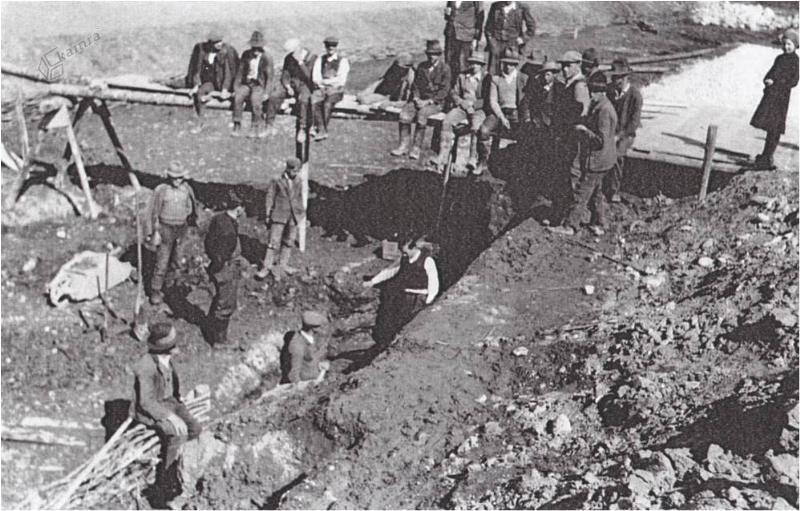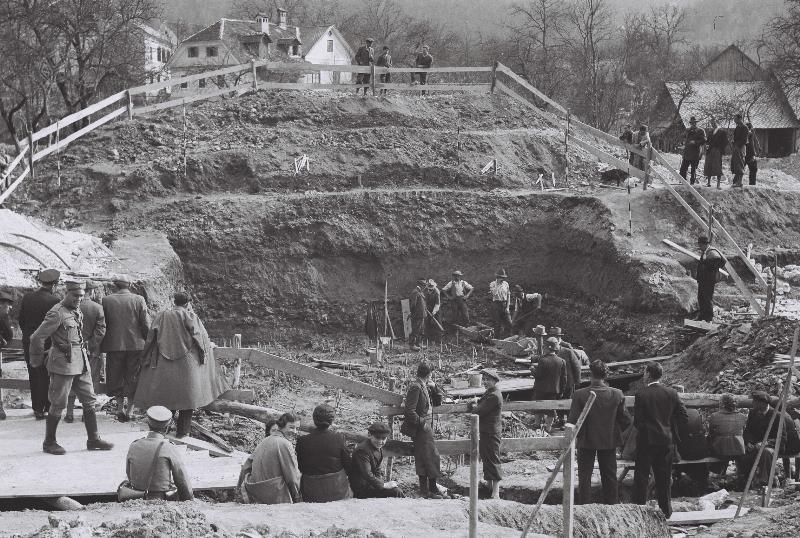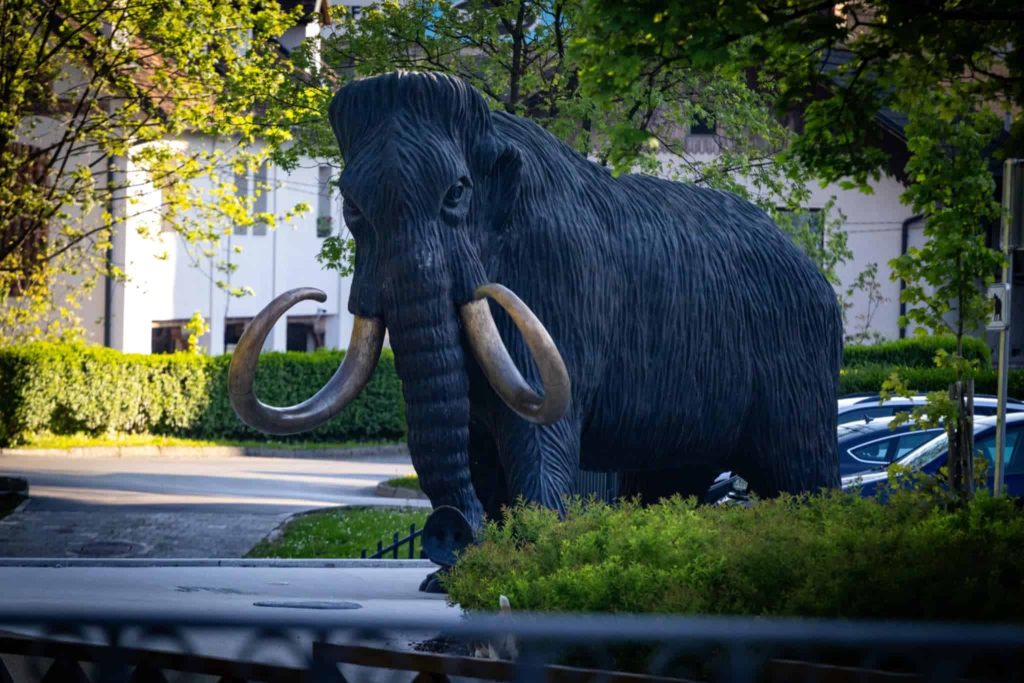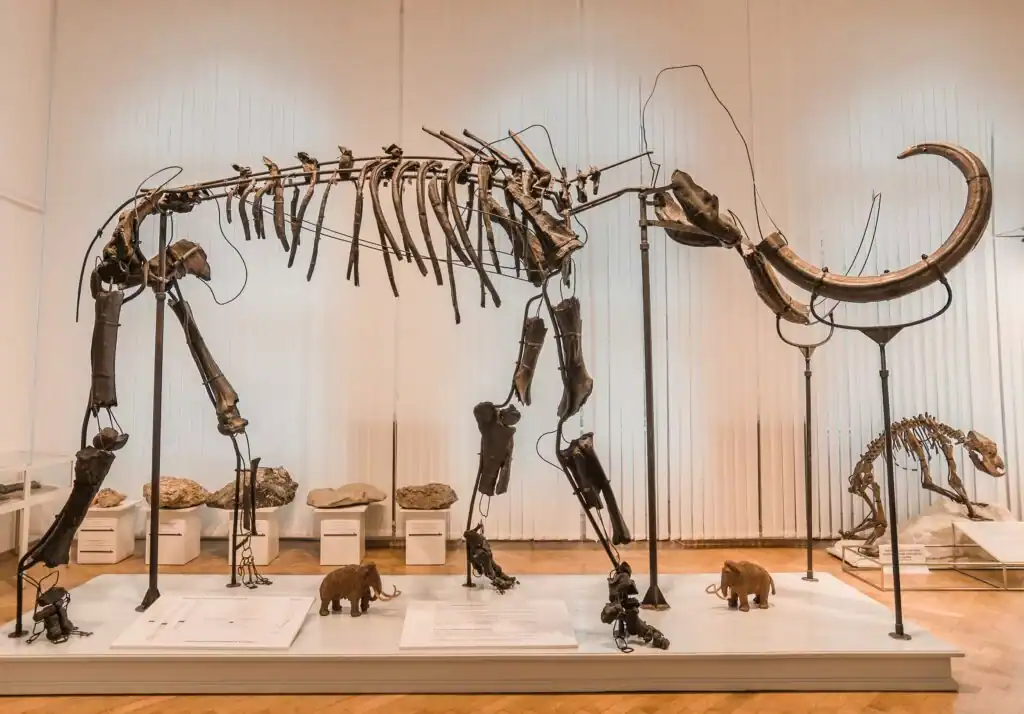Marveling at the (soon to be introduced) geocoins and other Kamnik 2025 Block Party geo-souvenirs (designed by our matej-h), you must have asked yourself what is the significance of the mammoth. Where did it come from? The simplest answer is: literally from the ground. Here’s the story.
In January 1938, the work commenced on regulating the Nevljica riverbed in Nevlje, a village just outside Kamnik. The river, a torrential stream, was eroding the banks and flushing away the fertile soil after heavy rains. The authorities decided to straighten the flow by constructing a new riverbed. The work was largely completed by mid-March, at which point they began digging the foundation for a new bridge.
On Monday, 14 March just after noon, Kamnik’s mayor Ferdinand „Nande“ Novak cycled past the construction site. He planned to visit some friends in the village, but decided to stop and chat with the workers. They complained that „some kind of tree stumps“ were hindering the excavation. The mayor examined the unearthed artifacts and concluded it was almost certainly not wood. He halted the work and decided to seek the opinion about the find from a local veterinarian (and avid collector of antiquities and art) Josip Sadnikar. Sadnikar visited the site, accompanied by his son Niko, a medicine student, and the painter Stane Cuderman, who owned a photographic camera.


The villagers of Nevlje speculated that the workers had unearthed the remains of the dragon that, according to a local legend, inhabited a long-vanished Nevlje lake. Sadnikar dismissed this speculation and conluded that the artifacts were part of a possibly complete mammoth skeleton. The mayor reported the find to the authorities, and the following day, experts from the Natural History Department of the National Museum in Ljubljana took over the excavation.

The discovery caused a great sensation at the time. The excavations were observed daily by masses of curious onlookers, reportedly coming from as far away as Austria and Italy. The find was extensively covered by daily press and became a subject of political debates on all levels. Although the site was guarded by gendarmerie, some (or perhaps more than some) bones ended up in private hands.

The excavations were completed by mid-April and the skeleton was subsequently transported to the National Museum in Ljubljana. A memorial board and a geocache mark the discovery location. Expert examination revealed it was a giant male mammoth, measuring an impressive 3.61 meters in height and 5.74 meters in length. Its perfectly preserved tusk measures 2,70 m in length. The discovery created significant scientific attention. The Nevlje skeleton was, at the time, the most complete single specimen ever discovered, as most of the exhibits in museums were typically assembled using the bones of several animals. Around 140 bones are preserved in what is now the Natural History Museum of Slovenia. The first artifact publicly displayed was the tusk. An exact replica of the rest of the skeleton was completed and exhibited during the World War II. Today, the skeleton is still the pride of the museum and the mammoth is featured in the museum’s logo.

There are rumours that the mammoth still roams the streets of Kamnik. If you are in luck, you might bump into it as you cruise all over Kamnik in search of geocaches and Adventures. Apparently, it likes to hang out around the central bus station (near the header coordinates of GCA84XT).
